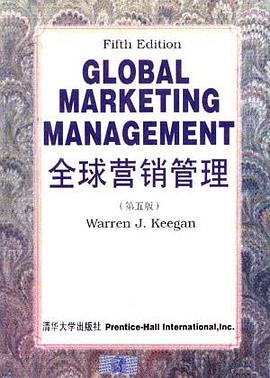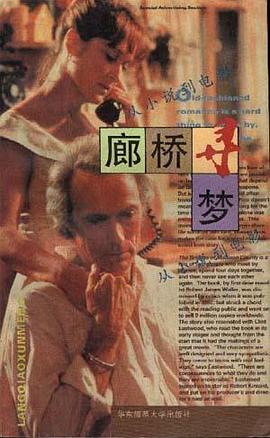PREFACE
PART ONE: A CONCEPTUAL OVERVIEW
One
Introduction to Global Marketing
MARKETING: A UNIVERSAL DISCIPLINE
The Marketing Concept The Three Principles of Marketing
FROM DOMESTIC TO GLOBAI/TRANSNATIONAL MARKETING
Domestic Marketing Export Marketing International Marketing
Multinational Marketing Global/Transnational Marketing
THE THEORY OF THE CASE
The Theory of Comparative Advantage
DRIVING AND RESTRAINING FORCES
Driving Forces Restraining Forces
UNDERLYING FORCES OF INTERNATIONAL BUSINESS
Orientations of Management
The Intemational Monetary Framework The World Trading System
Global Peace Domestic Economic Growth
Communications and Transportation Technology
The Global/Transnational Corporation
CONCLUSION
OUTLINE OF THIS BOOK
Summary Discussion Questions
Two
Global Marketing Planning
KEY CONCEPTS
Strategy The Company in the World
Clustering, Segmentation, and Target Marketing
Environmental Sensitivity Unifying and Differentiating Influences
Product Life Cycle/Market Life Cycle The Product Trade-Cycle Model
THE STAGES OP DEVELOPMENT OF THE TRANSNATIONAL
CORPORATION: A DYNAMIC TYPOLOGY
Stage One-Domestic Stage Two-International
Stage Three-Multinational Stage Four-Global
Stage Five--Transnational The Stages Compared
An Emerging Transnational Company: The News Corporation
REQUIREMENTS FOR A SUCCESSFUL GLOBAL MARKETING PLAN
What Kind of Global Plan? Planning Practices Summary
Discussion Questions Bibliography
Cases Which Company Is Transnational
Euro Disney in Trouble
PART TWO: THE GLOBAL MARKETING ENVIRONMENT
Three
Economic Environment
THE WORLD ECONOMY-AN OVERVIEW
ECONOMIC SYSTEMS
Market Allocation Command Allocation Mixed System
Productivity Around the Globe
MARKET DEVELOPMENT
Stages of Market Development The Location of Income
The Location of Population Marketing and Economic Development
CONSUMPTION PATTERNS
Engel's Law Product Saturation Levels
BALANCE OF PAYMENTS
TRADE PATTERNS
Merchandise Trade Services Trade
NATIONAL CONTROLS OF INTERNATIONAL TRANSFERS
Why Identify Control Motives?
THE GLOBAL ENVIRONMENT
Summary Discussion Questions Bibliography
Four
Social and Cultural Environments
BASIC ASPECTS OF CULTURE
The Search for Cultural Universals The Anthropologist's Standpoint
Communication
ANALYTICAL APPROACHES TO CULTURAL FACTORS
Introduction The Need Hierarchy The Self-Reference Criterion
Diffusion Theory High- and Low-Context Cultures Perception
NEGOTIATIONS: CROSS CULTURAL CHALLENGES
INDUSTRIAL PRODUCTS
CONSUMER PRODUCTS
NATIONALISM
CROSS-CULTURAL COMPILATIONS
AND SUGGESTED SOLUTIONS
Training in Cross-Cultural Competency Summary
Discussion Questions Bibliography
Five
Legal and Regulatory Environment
INTERNATIONAL LAW
NATION-STATES AND SOVEREIGNTY
Conflict of Laws Extraterritorial Reach
Freedom of Contract Should Not Be Taken for Granted
REGIONAL ORGANIZATIONS: THE EU EXAMPLE
CONFLICT RESOLUTION, DISPUTE SETTLEMENT
AND LITTGATION
Alternatives to Litigation for Dispute Settlement
Critical Elements of Arbitration
RELEVANT BUSINESS ISSUES
Establishment Patents and Trademarks Recourse Taxes
Dilution of Equity-Control Expropriation
Communist Countries
LICENSING
Examples
ANTITRUST
BRIBERY AND CORRUPTION
The Foreign Corrupt Practices Act (FCPA)
REGULATORY AGENCIES
The GATT Legal System Summary Discussion Questions
Bibliography
Six
Foreign Exchange
and Financial Decisions
A BRIEF HISTORY OF THE
INTERNATIONAL FINANCIAL SYSTEM
1944-1971 Today's System: Managed Dirty Float with SDRs
FOREIGN EXCHANGE
Foreign Exchange Market Dynamics
Forecasting Foreign Exchange Rates
BUSINESS IMPLICATIONS OF EXCHANGE
RATE FLUCTUATIONS
Exchange Rate Exposure Operating Exposure
MANAGING EXCHANGE RATE EXPOSURE
Tools for Managing Transaction Exposure
Managing Translation Exposure Managing Economic Exposure
Summary Discussion Questions Bibliography
Cases Club Med, Inc.The Special Challenge of GroWth
Fried Chicken in Japan
PART THREE: TARGETING GLOBAL MARKETS
Seven
Global Marketing Information Systems
and Research
ELEMENTS OP A GLOBAL INFORMATION SYSTEM
Information Subject Agenda Scanning Modes: Surveillance and Search
SOURCES OF INFORMATION
Human Sources Documentary Sources Perception Sources
Information Pcrception and Media
MARKETING RESEARCH
Comparability of International Data Assessing Market Opportunity
Special Problems in International Marketing Research
Five Rules for International Research Survey Research Sampling
ANALYTICAL TECHNIQUES
FOR RESEARCHING INTERNATIONAL MARKETS
Demand Pattern Analysis Income Elasticity Measurements
Estimation by Analogy Comparative Analysis Cluster Analysis
Multiple-Factor Indexes Regression Analysis
HEADQUARTERS CONTROL OF GLOBAL MARKETING RESEARCH
The Management of the Marketing Information System
The Marketing Information System as a Strategic Asset
An Integrated Approach to Information Collection Summary
Discussion Questions Bibliography
Eight
Global Segmentation,
Targeting, and Positioning
GLOBAL MARKET SEGMENTATION
Demographic Segmentation Psychographic Segmentation
Behavior Segmentation Benefit Segmentation
GLOBAL TARGETING
Criteria for Targeting Selecting a Global Target Market Strategy
GLOBAL PRODUCT POSITIONING
High-Tech Positioning High-Touch Positioning
WORLD MARKETS
Economic Cooperation and Preferential Trade Arrangements
Regional Economic Cooperation Regional Market Characteristics
MARKETING IN LESS DEVELOPED COUNTRIES
Summary Bibliography
Cases Choufont-Salva, Inc.
Swatch Watch U.S.A.: Creative Marketing Strategy
PART FOUR: FORMULATING GLOBAL MARKETING STRATEGY
Nine
Sourcing Decisions and the Value Chain
THE SOURCING CHALLENGE
Value The Value Chain
THE VALUE SYSTEM
THE VALUE CHAIN AND THREE
STRATEGIC ROLES OF GLOBAL MARKETING
SOURCING AND THE TRADE CYCLE
DECISION CRITERIA
Factor Costs and Conditions Transportation Costs
Country Infrastructure Political Risk Market Access
Foreign Exchange
SOURCING STRATEGY ALTERNATIVES
Sourcing Strategies of Stage-Two (International) Companies
Sourcing Strategies of Stage-Three (Multinational) Companies
Sourcing Strategies of Stage-Four (Global) Companies
Sourcing Strategies of Stage-Five (Transnational) Companies Summary
Discussion Questions Bibliography
Appendix: The Value System in the Automobile Industry
Ten
Strategy Alternatives
for Global Market Entry and Expansion
GLOBAL ENTRY AND EXPANSION: MARKETING
AND VALUE CHAIN MANAGEMENT ISSUES
EXPORTING
Automobiles: From Export to Local Sourcing
Perrier Water: Exported from "The Source"
LICENSING
JOINT VENTURES
OWNERSHIP
MARKET EXPANSION STRATEGIES
MARKET POSITION-A STRATEGIC GUIDE
MARKETING STRATEGIES OF U.S., EUROPEAN,
AND JAPANESE MULTINATIONAL SUBSIDIARIES
ALTERNATIVE STRATEGIES: STAGES
OF DEVELOPMENT MODEL
Summary Discussion Questions Bibliography
Eleven
Competitive Analysis and Strategy
INDUSTRY ANALYSIS: FORCES
INFLUENCING COMPETITION
Threat of New Entrants Threat of Substitute Products
Bargaining Power of Buyers Bargaining Power of Suppliers
Rivalry Among Competitors
COMPETITIVE ADVANTAGE
Generic Strategies for Creating Competitive Advantage
Competitive Advantage for Global Marketers
GLOBAL COMPETITION AND NATIONAL
COMPETITIVE ADVANTAGE
Factor Conditions Demand Conditions
Related and Supporting Industries
Firm Strategy, Structure, and Rivalry Chance
Government The System of Determinants Summary
Bibliography
Twelve
Cooperative Strategies
and Global Strategic Parnerships
REASONS TO COLLABORATE
IN GLOBAL STRATEGIC PARTNERSHIPS
ADVANTAGES OF GOING IT ALONE
THE NATURE OF GLOBAL STRATEGIC PARTNERSHIPS
SUCCESS FACTORS
Alliances with Asian Competitors
CFM Intemational/GE/Snecma: A Success Story
AT&T/Olivetti: A Failure Boeing/Japan: A Controversy
COOPERATIVE STRATEGIES IN JAPAN: KEIRETSU
How Keiretsn Affect American Business: Two Examples
INTERNATIONAL PARTNERSHIPS
Asia-Pacific
COOPERATIVE STRATEGIES
IN THE UNITED STATES: TARGETING THE DIGITAL FUTURE
BEYOND STRATEGIC ALLIANCES
Summary Discussion Questions Bibliography
Cases Metro Corporation: Teohnology Licensing Negotiation
Odysseus, Inc. (The Decision to Go "Intemational")
Global Competition--Motorcycles, 1955-1985
Harley-Davidson Motor Co., Inc.: Defending a Piece of the Domestic
Pie
PART FIVE: THE GLOBAL MARKETING MIX
Thirteen
Product Decisions
BASIC CONCEPTS
Definition of a Product Product Classifications
FIVE PRODUCT CHARACTERISTICS
GLOBAL BRANDS
Same Positioning Same Marketing Approach
PRODUCT SATURATION LEVELS IN GLOBAL MARKETS
PRODUCT DESIGN
Preferences Cost Laws and Regulations Compatibility
ATTITUDES TOWARD FOREIGN PRODUCTS
GEOGRAPHIC EXPANSION-STRATEGIC ALTERNATIVES
Strategy 1: Product--Communications Extension (Dual Extension)
Strategy 2: Product Extensibn-Communications Adaptation
Strategy 3: Product Adaptation-Communications Extension
Strategy 4: Dual Adaptation Strategy 5: Product Invention
How to Choose a Strategy Product--Market Analysis
NEW PRODUCTS IN GLOBAL MARKETING
Identifying New-Product Ideas
The International New-Product Department
Introducing New Products in National Markets Comparative Analysis
Summary Discussion Questions Bibliography
Fourteen
Pricing Decisions
GLOBAL PRICING STRATEGIES
Setting Prices: The Japanese Approach Pricing Objectives
Using Sourcing as a Strategic Tool in Pricing Products Dumping
ENVIRONMENTAL INFLUENCES ON PRICING DECISIONS
Pricing in an Inflationary Environment Devaluation and Revaluation
Government Controls and Subsidies Competitive Behavior
Market Demand
TRANSFER PRICING
Transfer at Cost Cost-Plus Pricing Market-Based Transfer Price
"Arm's-Length" Transfer Pricing Tax Regulations and Transfer Prices
Sales of Tangible Property Competitive Pricing
Importance of Section 482 Regulations
Other Constraints on International Pricing Joint Ventures
GLOBAL PRICING: THREE POLICY ALTERNATIVES
Extension/Ethnocentric Adaptation/Polycentnc
Invention /Geocentric Summary Discussion Questions
Bibliography Appendix 1: Trade Terms Appendix 2: Section
Fifteen
Channel Decisions
CHANNEL OBJECTIVES AND CONSTRAINTS
Customer Characteristics Product Characteristics
Intermediary Characteristics Environmental Characteristics
CHANNEL TERMINOLOGY
CHANNEL STRUCTURE
Consumer Products Global Retailing Industrial Products
CHANNELS IN LESS DEVELOPED COUNTRIES
INTERNATIONAL CHANNEL INNOVATION
CHANNEL STRATEGY FOR NEW MARKET ENTRY
CASE EXAMPLE: JAPAN
Six Steps to a Japanese Distribution Strategy Summary
Discussion Questions Bibliography
Sixteen
Global Marketing
Communications Decisions: Advertising
GLOBAL ADVERTISING AND BRANDING
ADVERTISING AND STAGES OP ECONOMIC DEVELOPMENT
GLOBAL ADVERTISING CONTENT:
THE "EXTENSION" VERSUS "ADAPTATION" DEBATE
ADVERTISING APPEALS AND PRODUCT CHARACTERISTICS
CREATING ADVERTISING
Art Direction Copy
GLOBAL MEDIA DECISIONS
Media Vehicles and Expenditures Media Decisions
Selecting Advertising Agencies Summary Discussion Questions
Bibliography Appendix: World Advertising Expenditures
Seventeen
Exporting and Importing
ORGANIZATIONAL EXPORT ACTIVITIES
NATIONAL POLICIES GOVERNING EXPORTS AND IMPORTS
Government Programs Supporting Exports
Export Expansion: The U.S. Example Export/import Licensing
Trade Negotiations Nontariff Barriers Tariff Classification
THE DECISION TO INVESTIGATE EXPORT MARKETS
CHOOSING EXPORT MARKETS
Creating a Product-Market Profile Market Selection
Visiting the Potential Market Developing an Export Program
MARKET ACCESS CONSIDERATIONS
Tariff Systems Single-Column Tariff Two-Column Tariff
Preferential Tariff Customs Valuation Code Types of Duties
Other Import Charges
EXPORT ORGANIZATION 1: MANUFACTURER'S COUNTRY
Extemal Independent Export Organizations
In-House Export Organization
EXPORT ORGANIZATION 11: MARKET COUNTRY
Direct Market Representation Independent Representation
Piggyback Marketing
EXPORT FINANCING/METHODS OF PAYMENT
Letters of Credit Documentary Collections (Drafts) Cash in Advance
Sales on Open Account Sales on a Consignment Basis
BARTER AND COUNTERTRADE
Barter Countertrade Summary Discussion Questions
Biliography
Appendix 1: Export Agents and Organizations-Glossary of Terms
Appendix 2: Global Opportunities for Small Companies:
The Case of Aremco
Cnscs Grasse Fragrances SA
Hot Shot to Japan: An International Marketing Case Study
Ito-Yokado Company
Kodak versus Fuji: A Case of Japanese-American Strategic
Interaction
A.S. Norlight
Richardson Manufacturing Company, Inc. A Domestic Company
Considers International Marketing Opportunities
Eighteen
Leading, Organizing, and
Controlling the Global Marketing Effort
LEADERSHIP
Core Competence Teams
ORGANIZATION
Patterns of International Organizational Development
International Division Structure Regional Management Centers
Beyond the International Division Geographical Structure
Worldwide Product Division Structure Strategic Business Units
The Matrix Structure Relationship Among Structure, Foreign Product
Diversification, and Size Organization Structure and National Origin
Getting Off the Reorganizational Merry-Go-Round
GLOBAL MARKETING MANAGEMENT CONTROL
Formal Control Methods Evaluating Performance
Influences on Marketing Budgets Share of Market
Informal Control Methods Variables Influencing Control
Types of Control Communications Communications Guidelines
The Global Marketing Audit Summary Discussion Questions
Bibliography Appendix: Asea Brown Boveri (ABB): Leadership in Action
Nineteen
The Future of Global Marketing
THE CHANGING WORLD ECONOMY
GLOBAL CORPORATIONS IN THE EVOLVING INTERNATIONAL
ECONOMIC ORDER
Summary Bibliography
Appendix: Establishing a Presence Around the Globe
Cases Parker Pen Co. (A): International Marketing Strategy Review
Parker Pen Co. (B): Parker Goes Global
Parker Pen Co. (C): An Interview with Dr. Dennis Thomas
The Publishing Revolution: A View from the Inside
· · · · · · (
收起)



 養生保健 2025 pdf epub mobi 電子書 下載
養生保健 2025 pdf epub mobi 電子書 下載 為官之道 2025 pdf epub mobi 電子書 下載
為官之道 2025 pdf epub mobi 電子書 下載 國旗下的講話(中學版.修訂本) 2025 pdf epub mobi 電子書 下載
國旗下的講話(中學版.修訂本) 2025 pdf epub mobi 電子書 下載 快樂的幼兒園(第二冊) 2025 pdf epub mobi 電子書 下載
快樂的幼兒園(第二冊) 2025 pdf epub mobi 電子書 下載 高校畢業生如何進入外資企業 2025 pdf epub mobi 電子書 下載
高校畢業生如何進入外資企業 2025 pdf epub mobi 電子書 下載 (最新版)中國初中生專題好作文(品格雜談) 2025 pdf epub mobi 電子書 下載
(最新版)中國初中生專題好作文(品格雜談) 2025 pdf epub mobi 電子書 下載 4*4領導法與企業目標 2025 pdf epub mobi 電子書 下載
4*4領導法與企業目標 2025 pdf epub mobi 電子書 下載 中藥炮製學 2025 pdf epub mobi 電子書 下載
中藥炮製學 2025 pdf epub mobi 電子書 下載 綫路業務(修訂版) 2025 pdf epub mobi 電子書 下載
綫路業務(修訂版) 2025 pdf epub mobi 電子書 下載 上海房地産投資與開發 2025 pdf epub mobi 電子書 下載
上海房地産投資與開發 2025 pdf epub mobi 電子書 下載 血字的研究 2025 pdf epub mobi 電子書 下載
血字的研究 2025 pdf epub mobi 電子書 下載 中國煤炭工業企業管理百科全書 2025 pdf epub mobi 電子書 下載
中國煤炭工業企業管理百科全書 2025 pdf epub mobi 電子書 下載 廊橋尋夢-從小說到電影 2025 pdf epub mobi 電子書 下載
廊橋尋夢-從小說到電影 2025 pdf epub mobi 電子書 下載 求學求職英語 2025 pdf epub mobi 電子書 下載
求學求職英語 2025 pdf epub mobi 電子書 下載 高級中學教科書英語第一冊(下)自學輔導 2025 pdf epub mobi 電子書 下載
高級中學教科書英語第一冊(下)自學輔導 2025 pdf epub mobi 電子書 下載 世紀名槍 2025 pdf epub mobi 電子書 下載
世紀名槍 2025 pdf epub mobi 電子書 下載 華東師大版一課一練--三年級數學 2025 pdf epub mobi 電子書 下載
華東師大版一課一練--三年級數學 2025 pdf epub mobi 電子書 下載 地産管理法規匯編 2025 pdf epub mobi 電子書 下載
地産管理法規匯編 2025 pdf epub mobi 電子書 下載 當代工筆·寫意畫馬技法 2025 pdf epub mobi 電子書 下載
當代工筆·寫意畫馬技法 2025 pdf epub mobi 電子書 下載 證券知識講座 2025 pdf epub mobi 電子書 下載
證券知識講座 2025 pdf epub mobi 電子書 下載




















